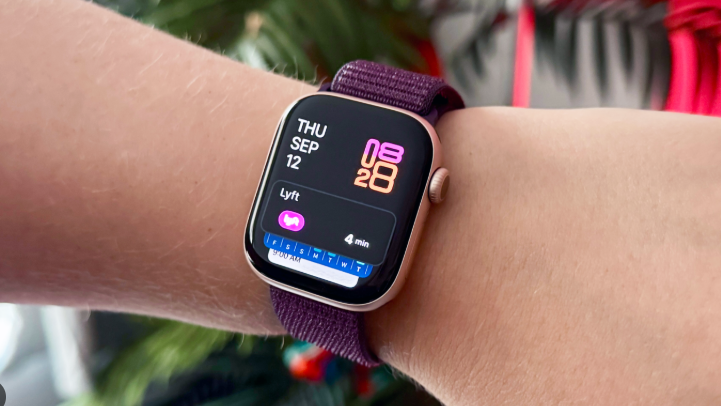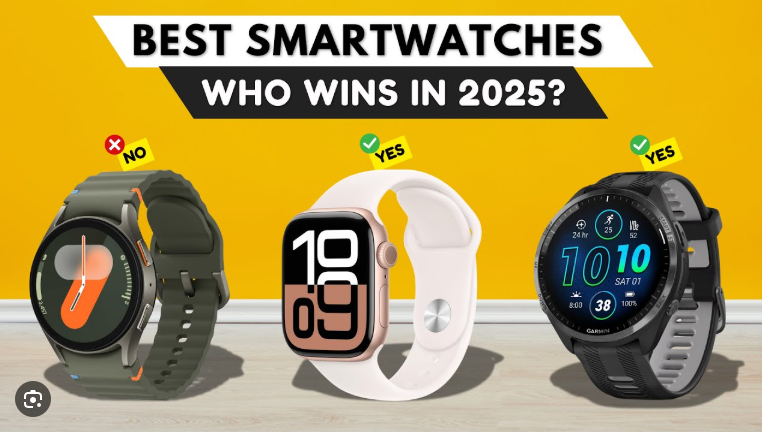In the dynamic world of wearables, the smartwatch vs fitness tracker debate is more relevant than ever in 2025. With advanced technology shaping how we track health, stay connected, and manage daily tasks, deciding between a smartwatch vs fitness tracker can feel overwhelming. Do you need the all-in-one functionality of a smartwatch like the Apple Watch Series 10, or is the streamlined simplicity of a fitness tracker like the Fitbit Charge 6 more your speed? This comprehensive best smartwatch guide explores the key differences, benefits, and practical tips for smartwatch setup, how to use a smartwatch, and smartwatch troubleshooting. Whether you’re after a portable smartwatch or a lightweight tracker, we’ll cover smartwatch maintenance, smartwatch cleaning, and smartwatch safety to help you choose the perfect device for your goals.
Understanding Smartwatch vs Fitness Tracker: What’s the Difference?
The smartwatch vs fitness tracker comparison boils down to purpose and functionality. Smartwatches, like the Samsung Galaxy Watch 8 or Google Pixel Watch 3, are versatile devices blending fitness tracking with smartphone-like features—think notifications, apps, calls, and music streaming. Fitness trackers, such as the Garmin Vivosmart 5 or Xiaomi Smart Band 9, focus primarily on health and activity metrics, offering a lightweight, budget-friendly alternative with longer battery life.
In 2025, the line between the two blurs as trackers adopt smart features like notifications and smartwatches enhance health sensors. For instance, the Fitbit Charge 6 includes Google Wallet for payments, while the Garmin Venu X1 offers advanced metrics like Body Battery. Yet, key distinctions remain: smartwatches boast vibrant displays and app ecosystems, ideal for tech-savvy users, while fitness trackers prioritize simplicity and endurance for fitness-focused individuals. Both emphasize smartwatch safety with features like heart rate alerts, but your choice hinges on whether you want a full-featured portable smartwatch or a specialized tracker.
Why does this matter? A smartwatch suits multitaskers juggling work and workouts, while a fitness tracker is perfect for those laser-focused on steps, sleep, or calorie burn. For more insights on choosing the right wearable, check out this wearable guide. Let’s dive into the specifics of each to guide your decision.
Smartwatches in 2025: Power-Packed Wearables for All-Purpose Use
Smartwatches have evolved into wrist-bound mini-computers, making them a top contender in the smartwatch vs fitness tracker debate. Here’s a look at leading models and their strengths.
Apple Watch Series 10: The Ultimate Smartwatch Experience
For iPhone users, the Apple Watch Series 10 ($399) is a standout in the best smartwatch guide. Its wide-angle OLED display hits 2,000 nits, perfect for sunlight readability. Health features include ECG, sleep apnea detection, and temperature sensing for cycle tracking, ensuring smartwatch safety. With 18-hour battery life (extendable via low-power mode), it handles notifications, Apple Pay, and music streaming seamlessly.
How to use a smartwatch like this? Swipe for apps, double-tap for quick actions, and use Siri for hands-free control. Smartwatch setup is simple: pair with the Watch app on your iPhone via Bluetooth. Smartwatch troubleshooting tip: Restart if notifications lag. Cons? Battery life trails fitness trackers, and it’s iOS-only. Still, its app ecosystem makes it a portable smartwatch powerhouse.
Samsung Galaxy Watch 8: Android’s Versatile Champion
The Galaxy Watch 8 ($329) excels for Android users in the smartwatch vs fitness tracker race. Its rotating bezel simplifies navigation, and Gemini AI powers workout suggestions. With ECG, blood pressure monitoring (region-dependent), and 40-hour battery, it’s built for active lifestyles. Pros: Vibrant AMOLED, 100m water resistance, and LTE options for calls without a phone.
Smartwatch tips: Customize watch faces via the Galaxy Wearable app. For smartwatch troubleshooting, reset Bluetooth if sync fails. Drawbacks include a steeper learning curve than trackers. It’s ideal for those wanting smart features with robust fitness tracking.
Google Pixel Watch 3: Sleek and Smart
The Pixel Watch 3 ($349) blends Fitbit’s health expertise with Wear OS 5, offering Loss of Pulse Detection and a 36-hour battery. Its 41mm/45mm sizes suit all wrists, and GPS accuracy rivals dedicated trackers. Pros: Bright display, Fitbit sleep insights, and Google app integration. Cons: Android-only and shorter battery than trackers.
How to connect smartwatch to phone? Use the Pixel Watch app for seamless Bluetooth pairing. Smartwatch maintenance: Wipe sensors weekly for accurate HR. A top pick for urban professionals in the smartwatch vs fitness tracker debate.
Fitness Trackers in 2025: Focused and Efficient
Fitness trackers shine for their simplicity and longevity, making them a strong contender in the smartwatch vs fitness tracker comparison. Here’s why they’re worth considering.
Fitbit Charge 6: The Wellness Warrior
The Fitbit Charge 6 ($160) bridges the smartwatch vs fitness tracker gap with an AMOLED display, built-in GPS, and Google Wallet. It tracks heart rate, SpO2, and stress via EDA sensors, with a 7-day battery. Pros: Lightweight (30g), auto-workout detection, and sleep scoring. Cons: GPS can falter in cities, and some features require Fitbit Premium ($10/month).
Smartwatch setup is quick via the Fitbit app. Smartwatch tips: Enable stress alerts for mindfulness. For smartwatch troubleshooting, toggle Bluetooth for sync issues. It’s perfect for casual users prioritizing health over apps.
Garmin Vivosmart 5: Athlete’s Budget Choice
The Vivosmart 5 ($150) offers Garmin’s precision in a slim band, with 7-day battery and Body Battery for energy monitoring. Pros: Accurate HR, sleep stages, and 50m water resistance. No built-in GPS (uses phone’s), which is a con compared to smartwatches. How to use a smartwatch? Sync with Garmin Connect for workout insights.
Smartwatch cleaning: Rinse after sweat. It’s a minimalist’s dream in the smartwatch vs fitness tracker debate, ideal for step counting and basic training.
Xiaomi Smart Band 9: Affordable Excellence
At $60, the Xiaomi Smart Band 9 delivers incredible value with a 21-day battery, AMOLED display, and 150+ sports modes. Pros: Lightweight (27g), SpO2 tracking, and notifications. Cons: No ECG or built-in GPS. Smartwatch setup via the Mi Fitness app is intuitive. It’s a budget pick for tracker fans.

Smartwatch vs Fitness Tracker: Head-to-Head Comparison
Here’s a quick breakdown to clarify the smartwatch vs fitness tracker choice:
| Feature | Smartwatch (e.g., Apple Watch) | Fitness Tracker (e.g., Fitbit Charge 6) |
|---|---|---|
| Battery Life | 18–40 hours | 7–21 days |
| Display | Large, vibrant AMOLED | Smaller, often AMOLED |
| Features | Apps, calls, music, payments | Basic notifications, health focus |
| Price Range | $300–$1,000 | $60–$200 |
| Weight | 40–60g | 20–30g |
| GPS | Built-in, precise | Built-in or phone-dependent |
Smartwatches offer versatility; trackers prioritize efficiency.
Smartwatch Setup: Getting Started with Ease
Whether you choose a smartwatch vs fitness tracker, setup is straightforward. For smartwatches, download the brand’s app (e.g., Watch for Apple, Galaxy Wearable for Samsung) and pair via Bluetooth. Fitness trackers like Fitbit or Garmin use similar apps (Fitbit, Garmin Connect). How to connect smartwatch to phone? Ensure Bluetooth is on, stay within 30 feet, and grant permissions for notifications and location.
Smartwatch troubleshooting: If pairing fails, restart both devices or toggle airplane mode. Smartwatch tips: Update firmware via Wi-Fi for optimal performance. Smartwatches may require app ecosystem tweaks, while trackers are plug-and-play. Check maintenance tips for setup guides.
How to Use a Smartwatch or Fitness Tracker: Maximizing Features
How to use a smartwatch depends on its complexity. Smartwatches like the Pixel Watch 3 let you swipe for apps, reply to texts via voice, and stream Spotify offline. Fitness trackers focus on health: tap the Fitbit Charge 6 for steps, heart rate, or stress scores. Both auto-track workouts, but smartwatches offer real-time coaching (e.g., Samsung’s AI pacing).
Smartwatch tips: Set daily goals—steps for trackers, VO2 max for smartwatches. Use haptic navigation for runs. For smartwatch troubleshooting, restart if apps freeze, and ensure snug fit for HR accuracy. Smartwatches excel for multitasking; trackers keep fitness front and center.
Smartwatch Maintenance and Cleaning: Keeping Your Device Pristine
Smartwatch maintenance is vital for both devices in the smartwatch vs fitness tracker debate. Wipe screens daily with microfiber to avoid smudges—skip harsh chemicals. Smartwatch cleaning: Rinse silicone bands post-workout (both are 50m water-resistant). For leather or metal bands, use mild soap or conditioner.
Charge on stable surfaces to protect cables. Smartwatch tips: Calibrate sensors weekly by exposing to light. Store in cool, dry places. Fitness trackers are lighter, reducing wear, but smartwatches need extra care for touchscreens. Visit smartwatch resources for cleaning hacks.

Smartwatch Troubleshooting: Common Fixes for Both
In the smartwatch vs fitness tracker world, issues like battery drain or sync failures are common. Dim screens and disable unused sensors (e.g., always-on display) to save power. For erratic HR, ensure a tight fit—trackers often outperform here due to lighter designs. Smartwatch troubleshooting: Restart (hold side button 10 seconds) for freezes. GPS off? Calibrate outdoors. Notification lags? Check app permissions.
Smartwatches may need app cache clearing; trackers resolve most issues with a reset. Back up data before factory resets. Community forums offer device-specific fixes.
Smartwatch Safety: Prioritizing Wellness and Security
Smartwatch safety is key for both. Smartwatches like the Apple Watch offer fall detection and SOS calls; trackers like Fitbit include irregular heart rhythm alerts. Enable wrist detection to lock devices when removed. Smartwatch tips: Avoid extreme heat/cold, and remove during contact sports. Review privacy settings to limit data sharing.
Trackers like the Vivosmart 5 prompt hydration; smartwatches add stress alerts. Both enhance wellness when integrated into daily routines, like sleep tracking for better rest.
Conclusion: Smartwatch vs Fitness Tracker—Your 2025 Winner
In the smartwatch vs fitness tracker showdown, your choice depends on needs. Smartwatches like the Galaxy Watch 8 offer versatility for tech lovers, while fitness trackers like the Fitbit Charge 6 excel in affordability and focus. With proper smartwatch setup, smartwatch maintenance, and smartwatch troubleshooting, either transforms your routine. Explore more at this wearable guide. Pick your best smartwatch 2025—smartwatch for connectivity, tracker for simplicity—and elevate your health journey today!